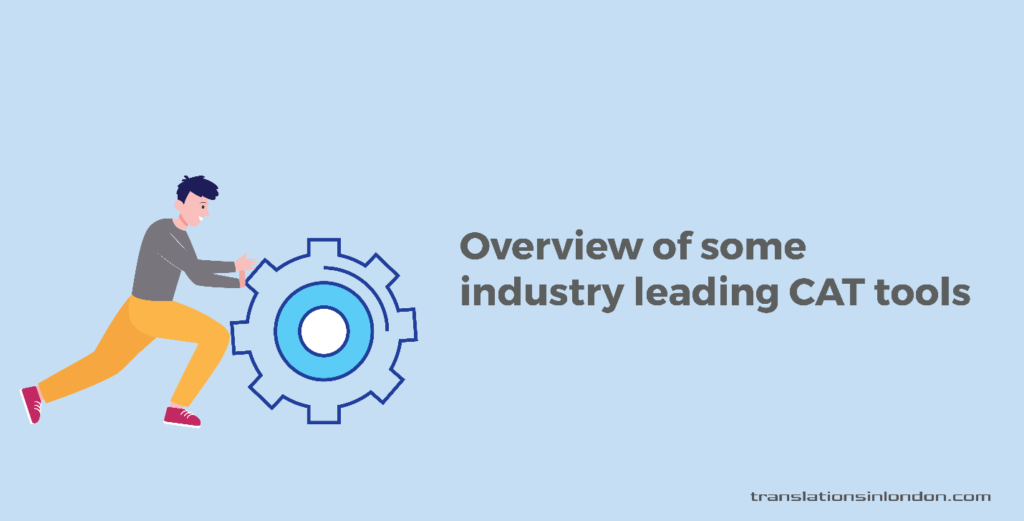The process of translation is most often not a one-way affair.
It involves several subroutines along the way before a final translated output is formed. Subroutines could be in the form of the initial planning, research, editing, and proof-reading.
But irrespective of the project (Localization, translation, or transcreation), one component at the center of it all is Computer-assisted-translation (CAT) tools used to carry out these projects. They are widely used by translators and translation agencies, due to the significant advantages they offer, notably in improving workflow and productivity.
So what are some of the most used CAT tools in the translation industry today?
In this post, we would be covering all of that in detail.

Requirements of the translation industry
With the rate at which technological advancements in the digital space are occurring coupled with the surge in demand for LSP services, it is logical for the translation industry to keep evolving the way they operate.
In a bid to remain competitive and stay profitable at the same time, translation companies must find technologically superior ways of doing things. Otherwise, they risk going out of business.
For example, Machine translation with post-editing (MTPE) now offers a faster, less expensive, and more efficient way of carrying out translation projects.
You also now have the growing use of Translation memory as a means of augmenting productivity, by improving a translator’s workflow, plus it also helps translation companies lower the cost of their services.
Today, software manufacturers are coming up with innovative solutions in the form of; Language search engine programs, terminology management software, alignment software, and the likes. To help improve the productivity and efficiency of translators.
The end result is some of these tools being used for a variety of purposes like software localization. Although, the ideal CAT tool should incorporate at least one or more of the aforementioned features.
What are the best CAT tools?
There are several CAT tools with various functions in the market today, too much that we would not be able to cover in just one post. But going by Proz’s survey of tools used by professional translators, let us touch on the five most used CAT tools.
SDL Trados: SDL Trados is an industry-leading translation software and the most used CAT tool by freelance translators and language service providers worldwide.
SDL Trados offers a host of features to boost the translation process, whether it is transcreation, localization, or whatnot. For starters, they offer Neural Machine Translation (NMT) support and cloud compatibility through their proprietary SDL Trados Live. It also supports terminology management to ensure the consistency of all your translation output and translation memory that helps boost productivity. SDL Trados compatibility across platforms PC, MAC Tablets, and Smartphones make it popular among enthusiasts and novice.
Let us quickly point out that SDL Trados is our preferred CAT tool at TranslationsInlondon.
Wordfast: Wordfast is the second-most used CAT translation tool in the industry, and it is pretty popular amongst professional translators, as it offers a pocket-friendly but effective translation memory solution to its users. Since it originally debuted as an extension on Microsoft Word, Wordfast is quite intuitive, especially for those familiar with Microsoft Office programs.
memoQ: This is another robust CAT tool similar yet provides a cheaper alternative to SDL Trados. Independent translators and language service providers alike would find this tool extremely useful for most of their needs.
memoQ has several products ranging from its comprehensive cloud platform to its translation management software, all geared towards improving efficiency and establishing quality assurance on all translated projects.
Across: Across is a CAT tool that attempts to strike the perfect balance between functionality and cost. It delivers quality assurance, workflow control, and automation to your translation projects due to its several inbuilt features.
Across, like many of its counterparts, offer a terminology management system and translation memory to boost efficiency and productivity.
Déjà Vu: A software solution from French software maker Atril, Déjà Vu attempts to provide an all-in-one solution for the entire translation process.
Irrespective of the peculiarities of an independent translator or the diverse needs of a language service provider, Déjà Vu has a host of features that cater to most user groups as it combines translation memory, terminology management, machine translation, and lexicology into one package.
Conclusion
Keeping up with the changes in the translation industry requires that freelance translators and translation agencies must employ the services of CAT tools to make their work process more efficient. In the same light, brands looking for translation services should only factor in companies that utilize technology in the form of Computer-assisted-tools since they tend to provide higher quality output at a lower cost.